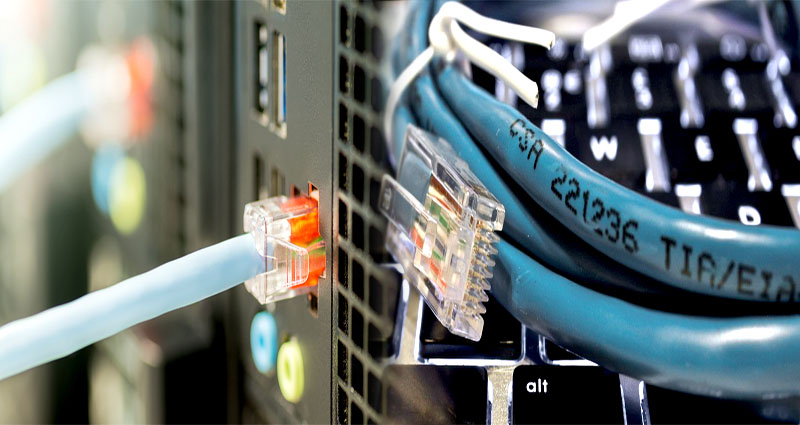Installing Ethernet Cables and Switches for Reliable Connections in a Wired Home Network
In our technologically advanced world, a strong and robust home network has become a necessity. With the increasing number of devices connected to the internet, a reliable and stable network connection has never been more important. While Wi-Fi has its advantages, a wired home network provides unparalleled speed, security, and stability. This article will guide you through the process of installing Ethernet cables and switches to ensure a reliable connection in your wired home network.
Why Choose Ethernet Cables and Switches?
Ethernet cables are the foundation of any wired network. They transmit data at high speeds and offer a stable connection, making them ideal for demanding applications such as online gaming, media streaming, or file transfers. When combined with switches, Ethernet cables enable multiple devices to connect within the network, eliminating the need for individual wireless connections.
Equipment Needed
Before diving into the installation process, gather the necessary equipment:
- Ethernet
Automated Backup and Data Redundancy Features with NAS Storage for Home
As digital data continues to grow in importance, ensuring its safety and accessibility becomes a top priority for individuals and households. Network Attached Storage (NAS) devices have become a popular solution for secure and reliable data storage at home. NAS systems not only provide ample storage capacity but also offer automated backup and data redundancy features, providing peace of mind and protection against data loss.
Understanding NAS Storage
NAS storage refers to a dedicated device or server that provides data storage and file-sharing capabilities over a network. These devices are designed to be easily accessible by multiple users and allow for centralized storage, making them an ideal solution for homes with multiple devices and users. NAS systems can be customized with various features, including automated backup and data redundancy, to ensure the integrity and availability of data.
Automated Backup
Automated backup is a crucial feature offered by NAS systems, allowing … Read More
Power-Saving Features for Eco-Friendly Operation in Energy-Efficient NAS for Home
As concern for the environment continues to grow, more and more individuals are looking for ways to reduce their carbon footprint and adopt eco-friendly practices. One area where energy conservation can be achieved is in the use of Network Attached Storage (NAS) systems for home. Energy-efficient NAS devices not only offer efficient data storage but also come with power-saving features that contribute to a greener lifestyle.
Understanding Energy-Efficient NAS
NAS devices are used to store and manage data on a network. They are commonly used in homes to create a central hub for accessing files, streaming media, and backing up data. Energy-efficient NAS systems are designed with power-saving mechanisms that help minimize energy consumption without compromising performance or functionality.
Power-Saving Features
Hard Drive Spin-Down
A significant portion of the power consumed by NAS devices goes towards spinning the hard drives. Traditional NAS systems keep the hard drives spinning constantly, even … Read More
Targeted Signal Distribution in WiFi Routers with Beamforming Technology for Large Homes
In today’s digital era, a reliable and high-performance WiFi connection has become essential for various activities, ranging from work to entertainment. Yet, large homes often present a challenge when it comes to providing a stable WiFi signal throughout the entire space. This is where beamforming technology in WiFi routers comes into play, offering targeted signal distribution to ensure smooth connectivity in every corner of a large home.
Understanding Beamforming Technology
Beamforming is a smart signal processing technique employed by modern WiFi routers to improve the quality and range of wireless connections. Traditional routers distribute signals equally in all directions, which can cause signal degradation and dead spots in larger spaces. In contrast, routers equipped with beamforming technology actively focus the WiFi signal towards specific devices, resulting in a concentrated and robust connection.
How Beamforming Benefits Large Homes
Enhanced Coverage
Large homes often consist of multiple rooms or floors, and it … Read More
Budget-Friendly Routers and Subscription Plans for Home Wireless Internet Solutions
In today’s connected world, having a reliable and fast internet connection is essential for both work and leisure. Setting up a home wireless internet network requires two key components: a router and a subscription plan. In this article, we will explore budget-friendly options for both routers and subscription plans to help you find the best solutions for your home wireless internet needs.
Choosing a Budget-Friendly Router
A router acts as the central hub of your home wireless network, allowing your devices to connect to the internet. When looking for a budget-friendly router, consider the following factors:
- Wireless Standards: Look for routers that support the latest wireless standards, such as Wi-Fi 5 (802.11ac) or Wi-Fi 6 (802.11ax). These standards offer faster speeds and better connectivity.
- Coverage Area: Consider the size of your home and its layout. Look for routers with strong coverage and signal strength that can cover your














